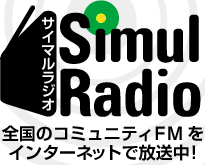 |
| Lace is usually a mixture of solid areas and areas which are looser, or have gaps in. It is the difference between these types of areas which provide the pattern in the lace. The looser area is ground or net. The denser area can be called toilé. In Torchon, the simplest example is a diamond. A diamond using 8 pairs of bobbins uses 49 stitches, where ground with the same number of bobbins only has 16 stitches, which shows why the diamond looks denser. It uses less pins, though. Once you have figured out how a diamond is worked, you can extend the idea to fans, strips, zigzags, hearts and buds. |
| Diamonds Working a diamond Cloth stitch diamond Half stitch diamond Joining two diamonds | Strips, etc. Strip Zigzag Heart | Straight edges Triangle Vertical edge Horizontal edge | Other shapes Upwards chevron Downwards chevron Fan Bud |
Working a diamondDiamonds can be of different sizes, but on the left is a pricking pattern for a diamond using 8 pairs of bobbins, 4 each side. You can have cloth stitch diamonds and half stitch diamonds. |
 | The diagram on the right shows the working of a diamond with 4 pairs on each side. Each pair is shown as a single line to simplify the diagram. The number at the bottom shows how many pairs (including the workers) are in the diamond for this row. The +/-1 shows whether a pair are included or dropped, and on which side. Before starting the diamond, work all stitches above the diamond, up to, but not including, the edge pins of the diamond. In a diamond, you work rows of stitches. The first row, at the top of the diamond, is just two pairs of bobbins. Chose one pair (it doesn't matter which) to be the worker pair. Work it across the other pair, and pin at the end of the row, between the workers and the other bobbins. Work back again, picking up another pair at the end of the row, and pin again. Carry on picking up an extra pair at the end of each row, from one side then the other, until you are working across all the bobbins in the diamond, which will be the widest part. Now drop a pair off at the end of each row. (The widest row picks up a pair at one side, and drops a pair on the other side.) At the bottom of the diamond, you should be left with two pairs at the last pin, which are worked across each other to cover the pin. |  |
| At the end of each row, after the pin, tighten the working slightly. You do this by pulling on the bobbins very gently. You can also "stroke" the bobbins by running your hands over them downwards, or tap the top of the bobbins. This works with most of the bobbins, but the workers will probably need a gentle tug! Keep an eye on the pairs of bobbins that join or leave the lace. If you forget a pair, then you will end up with too bobbins at the end. If you drop off bobbins when you shouldn't, you will end up with too few. This is one reason why I tend to mark Torchon ground threads in my patterns. It means that I can check if threads need to join or leave the pattern at each pin. All pairs need to be twisted before they start a diamond. However, most stitches tend to end up with a twist in each pair, so it will have been done automatically (but it's worth checking!) You will also need to twist the bobbins as they leave the diamond. This is done automatically in half-stitch diamonds, but not in cloth diamonds, so you need to remember to do it. Either do it at the end of each row, or do it to all the bobbins when the whole diamond is finished. Then you can work the threads coming out of the diamond as you wish. You can twist the worker pair at the end of each row one or more times, or leave untwisted. Twisting them, particularly more than once, will leave a little loop. You may find this attractive or not. The main point is to decide whether to twist the workers or not, and stick to it. What matters is consistency. The last row happens after the pin, and just works the last two pairs across each other. This row is optional. If one diamond touches another beneath it, then you leave it out. You can always leave it out if you wish. But including it does make the diamond symmetrical, and anchors the the threads leaving the bottom of the diamond. |
 | Cloth Stitch DiamondThis cloth stitch diamond needs 8 pairs of bobbins, 4 coming in on the right, and 4 coming in on the left. These diagrams will be tilted slightly in the real lace, to fit the pricking pattern. All stitches are worked in cloth stitch, with twists at the end of each row, although if you want, you can leave the twists out, or do more than one twist (see above). The worker bobbin threads are shown in red. You can see how they are used in every stitch. You may need to wind on more thread for your worker bobbins! One of the passive pair of bobbins is shown in blue, to show where they go. Each thread is shown, unlike the diagram above. All the pairs of bobbins should be twisted on entering and leaving the diamond. The previous part of the lace has probably twisted them already, but check that it has. But you will need to twist them after the diamond before working the next piece of lace. You can even give more than one twist before and after the diamond, if you wish. This can high-light the diamond more. The photo shows a cloth diamond from the checkerboard pattern. |  |
 | Half Stitch DiamondIn a half stitch diamond, there are no worker bobbins. Instead, use the first 4 bobbins for the first stitch. Then leave 2 behind, and use the others plus the next 2 bobbins for the next stitch, etc. This means that you are using different bobbins for every stitch. The red and green threads start in the same place as the red and blue threads in the cloth stitch diamond above, but they end up all over the place. It is an unfortunate property of half-stitch that the bobbin pairs get split up! In all diamonds and solid areas, the bobbins need to be twisted before and after working the shape. However, the previous part of the lace may have twisted the bobbins already (but check they have!) and the half stitch will have twisted the bobbins already on leaving the shape, so you don't have to worry about this. You may, of course, wish to give an extra twist if you wish to high-light the diamond more. The threads pass through a half-stitch diamond in rather a strange way. This adds to the attraction of the finished pattern, but it is important not to make mistakes, as they will show up badly! Some threads go diagonally one way, some the other way, and some travel horizontally (but only as single threads, not like cloth diamonds, where both worker threads travel horizontally). See upper diagram on the right. However, if you twist the last pair of threads in each row, then the same thread is the only horizontal thread for the whole diamond. See lower diagram on the right. The photo shows a cloth diamond from the checkerboard pattern. |   |
  | Joining two diamondsSometimes two diamonds touch, as in the checkerboard pattern. This complicates the working. First, you must work first one diamond, then the other, until the halfway point where they touch. In the diagram on the left, you see that I have chosen the workers so the two diamonds reflect each other. This helps to make the final result look more symmetrical. The join itself can be done in two ways, see right. You have a pair of bobbins from each diamond next to each other. If it is a cloth stitch diamond, then this will be the worker pair. Work these two pairs across each other, and put a pin between them. Now you have a choice. Either you can work them back again to rejoin their own diamond, or you can leave them to become the workers (or equivalent in a half stitch diamond) of the other diamond. The first method will give a distinct hole where the pin was covered. The second won't, as the pin is just there to stop the horizontal rows drooping at that point. Try each method and see which you prefer. |   |
 | Working a stripWhen you work a diamond, you either pick up a pair or drop a pair off for each row. You can also have a strip of cloth stitch or half stitch. These can be of various dimensions. Their working is similar to working a diamond, but you have to be more careful when to pick up or drop off threads.The diagram on the left shows a strip of cloth stitch, surrounded by Torchon ground. Each pair is shown as a single line. The pair that will become the workers are shown in red. You can see that while a pair is picked up each row until the workers work across 7 pairs, after that, in alternate rows, a pair is picked up or a pair dropped. That keeps the strip a constant width until you meet the next corner, and then it narrows by dropping pairs off on each row, like the second half of a diamond. |
| Once you start working strips, you will notice that they are not always the same width, even though the pattern shows them the same. The reason is the order of picking up threads or dropping them. On the pattern, this happens on the same line, but when you work it, you don't do them at the same time. One row you drop off a pair, so the width is less. The next you pick up a pair, so the width is more. This is inevitable. However, it makes a difference if you pick up threads before dropping them on the same row. If you look to the right, there is exactly the same pattern, but it has been worked in different ways. The left one has 5 or 6 pairs of threads in each row (once you have got to the main part of the strip), while the right one has 4 or 5 pairs in each row. The difference is only one, and for thick strips this doesn't matter, but you do notice it with thin strips. |   |
 | The way you control how many pairs to a row is which pair you chose to be the worker pair. At the top of the strip, the point, you start by working two pairs of threads, and putting in a pin. Then you have to chose one of thse pairs to be the worker. There is a tendency to always pick the right pair (or left pair). But this means that strips sloping one way will be thicker than strips sloping the other. Look at the strip. One long edge picks up threads, the opposite one drops them off. If you want to have thicker strips, then make the worker pair the bobbins that starts by working towards the long edge that picks threads up. So, for the example on the right, the red threads will work towards the long edge picking up threads (as the threads are going into the strip), so if you use them as the workers, you will get a thicker strip. If you use the blue threads, they are heading for the long edge which is dropping off threads (eventually), so this will give a thinner strip. It's up to you whether you have a thinner or thicker strip, but I suggest that you keep to a constant thickness for the whole pattern. If you can't understand that explanation, then follow this rule. If your strip slopes from right to left, then chose the right hand pair (after the top pin) as worker pair. If the strip slopes from left to right, chose the left hand pair (after the top pin). This will always give a thicker strip (which I think gives a better effect). |
This width of strips is not really important, and I worked lots of lace before I even noticed it! So if it's all too complicated, don't worry. Have variable widths of strips, and no-one is likely to notice.
Different way of working a stripThe usual way of working a strip is to keep the same pair of bobbins as workers throughout. These go round the pins at the end of each row and end up at the bottom point of the strip. This can lead to an uneven pattern of threads joining and leaving the strip. For thicker strips, this doesn't matter, but it can be more obvious for thinner strips (see right). |  |
A different way to do it involves changing the worker pair for each row. At the end of every row, instead of placing the pin between the worker pair and the last passive pair, you place the pin in the middle of the last stitch of the row. This will be a cloth stich, so you do half stitch, pin, then complete the cloth stitch. No twists!



 | You then leave the pair that was worker in the previous row and use the previous last passive pair as the workers for the next row. The old pair of workers will either leave the strip altogether (which will probably mean that they will need to be twisted), or they will become passives in subsequent rows. See the diagram on the left which shows which the individual pairs go, and the photo on the right for an example. This method is a little confusing, as it keeps changing workers. Also, since the pin goes in the middle of the stitch, when you tighten the threads, they don't always tighten as you expect. Sometimes you have to wait for another row, or for the pair to leave the strip, before the tightening works. You should try to pull out any bunching or loops during working, though. |  |
 | Working a zigzagOnce you are confident with working strips, you can try working a zigzag. Marking the ground stitches that lead into and out of the zigzag can help you remember which bobbins to pick up or drop off. There is one problem about working a zigzag. With diamonds, you may be able to get all threads ready that go into the diamond, then work the entire diamond in one go. However, the zigzag is likely to go the entire length of the lace. So you probably can only work a zig (or a zag). Then you leave the zigzag, work the part of the pattern that uses the bobbins leaving the zigzag until you have enough bobbins to pick up the zigzag again, and work the zag (or, of course, the zig). The zigzag pattern has a zigzag of half-stitch. |  |
Since zigzags are just strips joined together, you get the similar problems with widths. The width of a zigzag varies depending which way it's sloping. You can't even control it by careful choice of worker, as you use the same worker whichever way the zigzag is sloping, and this will inevitably cause a thin width one way, and a thick width the other. I would suggest that you just ignore this, as honestly, most people won't notice it. You could even say that it might give a 3D effect. However, this can be overcome by an extra pinhole in the right place. Some of my patterns do this, such as Celtic knots.
  | Working a heartA heart is a specialised zigzag. You work it as if you were starting a zigzag, but taper it off almost immediately. Like zigzags, you can't work it all at once. Get all the threads ready that feed into the heart. Work half the heart. Then work the ground stitches (or whatever the pattern has) to the left of the heart, inside the two points. That will gives you the threads to work the rest. You can, of course, have hearts facing the other way. You can also have hearts of different sizes. I like hearts! Here are several heart patterns. |  |
Working an upwards chevron
| Zigzags are quite easy but chevrons (which go the other way) can cause trouble. The problem is that at one point either you move from one worker pair to two or reducing two worker pairs to one. Let's start with an upwards chevron (see right) where there is one pair of workers before the split, and two afterwards. You starts with one worker pair. Work this until you get to the point where it needs to split. Work it across the middle pair of the row, put a pin in. Now work it back again, and treat both those pairs as worker pairs in their own halves of the points of the chevron. That sounds OK, but it's easy to get problems. First, you can end up with the wrong number of bobbins in each half. Second, you often get a gap in the lace above the pin which looks ugly. The reason for this is that "until you get to the point where it needs to split" is ambiguous. Below are the different choices. |  |
 | Here, before the split, the worker pair has done the pins above the divide pin, but neither of the pins on the same row as the split. This does tend to leave a gap above the pin in the finished lace. |
 | Here, one of the pins on the same row as the split pin has been worked before the split, but not the other. This reduces the potential gap in the lace, but it does mean that you have a different number of threads in each half after the split. (This is because you have picked up a pair on one side, but not on the other yet). I find that this makes it easy to make a mistake here, and have the wrong number in each half. You tend to discover this mistake several rows later! This way also means that the two parts of the chevron after the split are different widths. |
 | I think this is the best solution. Before the split, work BOTH pins on the same row as the divide pin. Then work back to the midpoint, past the middle pair and put the pin in. You work in an extra half row this way, which makes the lace quite dense at the split. This is a good thing, as it avoids gaps. But you do need to tighten up the threads carefully to avoid a bobble or loop. It also is symmetrical, so you have the same number of threads in each half of the chevron, which makes finding the middle pair of bobbins easier! |
Working a downwards chevron
| Now to make two strips become one or a downwards pointing chevron (see right). Work both sides until both workers meet in the middle. Work them across each other and put a pin between them. Continue with one pair as the remaining worker, leaving the other pair to hang downwards as the middle passive. That explanation sounds simple, but there are four possibilities! I show them below, with comments. |  |
 | Whenever you work solid cloth stitch, you will work a horizontal line one way, and a sloping line the other. Depending which pair you chose as workers right at the start, the slope will be from left to right, or right to left. In this example, both workers before the join are sloping the same way, right to left. This means that the right hand workers reach the middle first, before doing the pin on the same horizontal line. The left hand workers have done their pin on the same line. I've chosen the right hand pair as the workers after the join, as they can double back and pick up the pin they haven't done yet. This makes a good filled-in effect. |
 | The workers before the join slope the same way as the previous pattern, but here I have chosen the left-hand pair to be the workers after the join. If I double back, this means that one pin has to be left out altogether! This is because if I work this pin, the whole bottom of the chevron will be unbalanced and I'll run out of pins on one side before the bottom. If you find yourself in this situation, you could solve it by not doubling back at the pin, but carrying on working in the same direction. Or chose the other pair as workers! |
 | Here the workers on the left slope right to left, and the workers on the right slope left to right. Because these are symmetrical, this means that it doesn't matter which pair of workers you chose. This way of sloping means that the width of the sides of the chevrons are both the same width. They are both narrow, and there is a slight gap at the join. |
 | Here the workers slope different directions from each other again, but going the other way. This means that the width of the chevron's sides are both thicker (which I prefer). It doesn't matter which pair of workers you chose, and the chosen pair start by working for the edge as a horizontal line, and then back, still as a horizontal line, to the other edge. This makes it hard to illustrate! It also gives a good lot of rows at the join, which makes a good, firm join. However, since there is this extra row, you need to tighten the threads carefully, or you will get a bobble or loop. Still, I think this is my preferred solution, as it avoids the gaps which bedevil chevrons. |
The Celtic knot patterns have quite a few chevrons.
 | Working a triangleYou can work half a diamond, or a triangle. This is particularly useful next to a footside (see right) but you can put it anywhere in the lace. It can be worked in cloth stitch (see right) or half stitch (see left). You can see that there are extra pinholes down the vertical edge, which are not part of the Torchon grid. A diagonal line has twice as many holes as a vertical line, and since the rows need to join a diagonal line to a vertical one, you need to add the extra holes. So on the vertical edge, some row ends have no threads joining or leaving, and some have a pair of threads joining for one stitch, then immediately leaving. The Sri Lankan lace and the clutter of spiders use triangles. |   |
 | There is another way to work a triangle along the edge of the lace. Rather than working it as half a diamond, you can use the same worker pair that you use for the triangle to work the footside as well. This is particularly effective when you use Winkie pin footsides. The edge passive pair inside the trinagle stays there, so you get a straight edge to the triangle. The Winkie pin example uses this type of triangle. |  |
  | Vertical edgeYou can extend the idea of the triangle to produce a vertical edge on both sides. (This is vertical, or straight up and down, as viewed when working the lace). Normally, Torchon lace has sloping edges, and vertical edges can cause problems. In particular, you need extra holes on both sides to get enough rows, otherwise the shape will be loose. So there are two problems with working the lace. First, you have to work out whether it is one of these extra holes or not. If it is an extra hole, then you do not pick up or drop a pair of threads (as you do normally with diamonds). You just work across to the pinhole, put the pin in, and work back again. If it is a regular hole, then you need to both pick up and drop a pair from the same side. So work across picking up the pair at the end, at the pinhole. Put in the pin. Work back again, dropping up the pair that you've just picked up. This is not too complicate. The complicated part is working out which you do! I tend to mark the ground explicitly on the pattern to give me a clue as to whether threads are coming in or not (see left). The second problem is where these threads are coming from. Normally, in a diamond, you work all the lace before the diamond (this will be something like ground, or a spider). Then you can work the whole diamond at once. At the end, you carry on with the rest of the lace. Even with zigzags or hearts (see above), you work a whole section, or half a heart, then work some other part of the lace before continuing with the zigzag or heart. But at least you can do a good chunk of solid in between the rest. With straight vertical edges, you have to do a pin or so of ground every couple of rows, as each new pair of threads that get picked out need to work across a pair that have only just left. See right for details. |  |
 | Horizontal edgeA horizontal edge (across, as seen when working the lace) is easier than a vertical edge (see above). At the top edge, work the ground down to (but not including) the edge. Now work each two pairs of bobbins at each pinhole. The best way is to use the same type of stitch as the solid shape. So if you are doing a cloth stitch shape, work a cloth stitch, and work a half stitch for a half stitch shape. Put the pin after the stitch, between the two pairs. This sets up all the pairs of threads for working the first row. At the bottom edge, put the pin in first, between each pair of bobbins. Then work the two pairs across each other in the same way. Once you can manage diagonal (as in diamonds), vertical and horizontal edges, then you can make all sorts of shapes. Some of the detail does't come out in lace, unfortunately. You will need to tighten up the shape a lot while working it. The Scottie dog lace shows some of the problems! |
FansA fan is worked in a similar way to a diamond. It is a headside, making an edge of lace. It is described in detail in the section on headsides. |  |
 | Working a budYou get buds in English Maltese. They are really half-stitch diamonds, but English Maltese uses legs rather than ground stitches, so the buds are joined to the lace in a different way. In the diagram on the right, the legs are coloured green. The leg at the top is worked down to the start of the bud, then the two pairs in the leg start the first half stitch row. The legs from each side are worked down to near the bud, and the two pairs in each leg are then divided up. One joins the bud a couple of rows before the other one. The middle of the bud is joined to the rest of the pattern with the pair on that side working in cloth stitch to that part of the pattern, pin, and cloth back again. Then the rest of the bud is tapered off in the same way. I've coloured the rows in pink, so you can see the pairs from the legs being picked up separately. The main part of the bud is coloured pale blue. It doesn't reach to the edge like a diamond, because that's what seems to happen. There is a bud in this beginner pattern. |






























































































































.jpg)








.jpg)















































.jpg)





































































































No comments:
Post a Comment